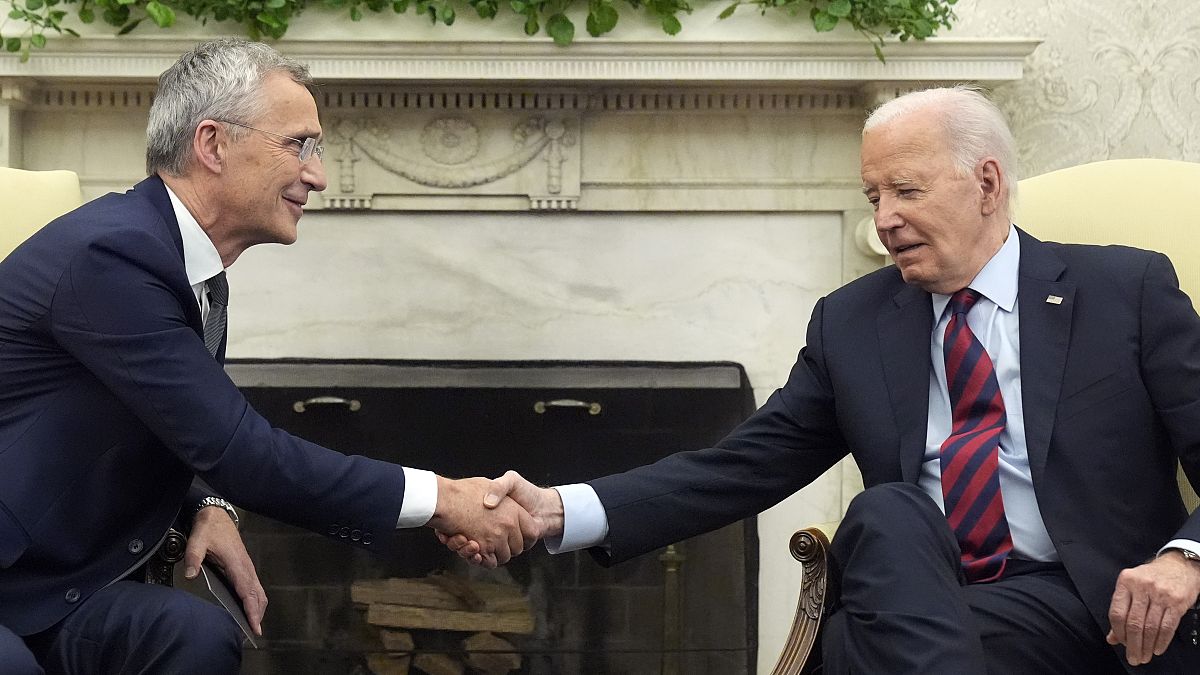The NATO member countries are meeting defense spending targets this year at a record pace, reflecting a nearly fourfold increase from the previous year. This significant surge in defense spending comes amid heightened concerns over Russia’s invasion of Ukraine in 2022. NATO Secretary-General Jens Stoltenberg announced that a record 23 out of 32 member nations are hitting the Western military alliance’s defense spending target, a significant improvement from the six nations that achieved the goal in 2021. Stoltenberg highlighted the increased commitment of European nations to collective security, with the increased spending reflecting growing concerns about the security situation in Europe.
Following his announcement, Stoltenberg met with US President Joe Biden at the White House, where Biden praised the strength and unity of the NATO alliance under Stoltenberg’s leadership. Biden expressed his admiration for Stoltenberg and expressed his hope that Stoltenberg would serve another term as NATO Secretary-General when his current term expires in October. The US president emphasized the alliance’s role in deterring further Russian aggression in Europe and reaffirmed the commitment to defending every inch of NATO territory. The surge in defense spending across NATO members reflects the shared concerns about security challenges in Europe and the need to strengthen the alliance against potential threats.
NATO members agreed last year to allocate at least 2% of their GDP to defense spending, with several countries exceeding this target, including Poland and Estonia, which border Russia. The significant increase in defense spending across European allies and Canada this year marks the largest surge in decades, demonstrating a growing commitment to preparedness and security within the alliance. Concerns about the potential reelection of former President Donald Trump, who has criticized NATO allies for inadequate defense spending, have also prompted NATO members to increase their contributions to the alliance in recent years.
Stoltenberg’s visit to the US is setting the stage for an upcoming summit of NATO leaders in Washington next month, where discussions are expected to focus on the alliance’s response to the ongoing conflict in Ukraine. As Ukraine continues to face relentless air and ground attacks from Russia, NATO leaders are exploring ways to support the country, including streamlining the membership process for Ukraine and providing updated arms and training to its military. Stoltenberg emphasized that only by taking Ukraine into the alliance can NATO deter Putin from future aggression and ensure long-term stability in the region.
The NATO summit in Washington will address the evolving security landscape in Europe, with a focus on strengthening the alliance’s defense capabilities and supporting partner countries facing security challenges. Stoltenberg highlighted the importance of unity and solidarity within NATO as the alliance faces complex security threats and regional tensions. The increased defense spending by NATO members reflects a shared commitment to collective security and preparedness in the face of emerging threats and challenges. As NATO continues to adapt to evolving security dynamics, the alliance remains a cornerstone of stability and security in the Euro-Atlantic region.
In conclusion, the surge in defense spending by NATO members reflects a shared commitment to strengthening the alliance in response to growing security challenges in Europe, particularly in light of Russia’s invasion of Ukraine. The upcoming NATO summit in Washington will provide an opportunity for leaders to discuss ways to support Ukraine and bolster the alliance’s defense capabilities in the face of evolving security threats. As NATO continues to adapt to changing security dynamics, unity and solidarity within the alliance will be essential in ensuring stability and security in the Euro-Atlantic region. The increased defense spending across NATO members demonstrates a renewed focus on collective security and preparedness to address emerging threats and challenges in the region.











